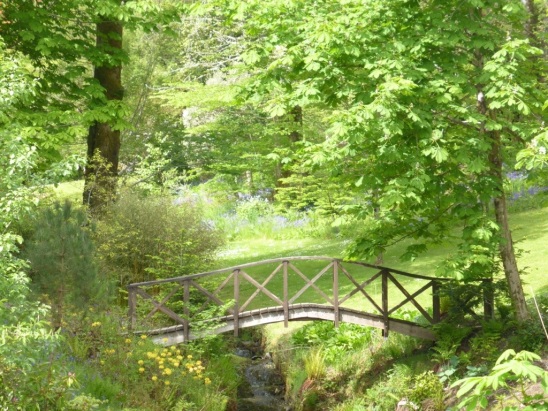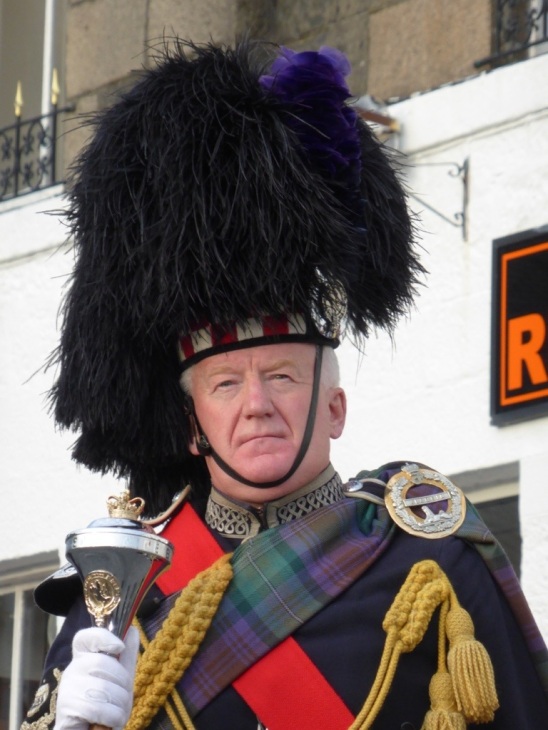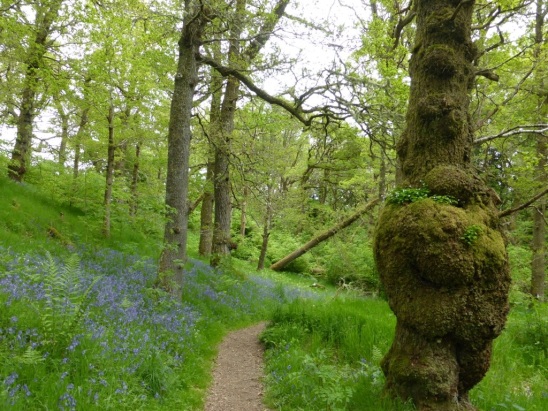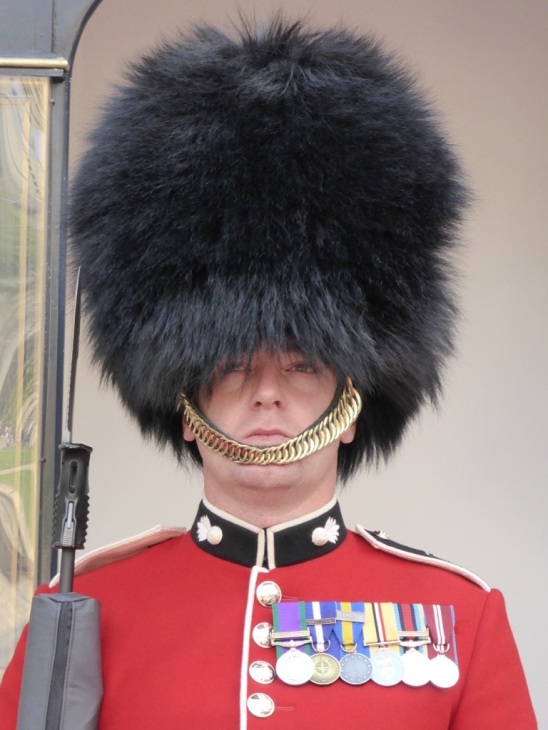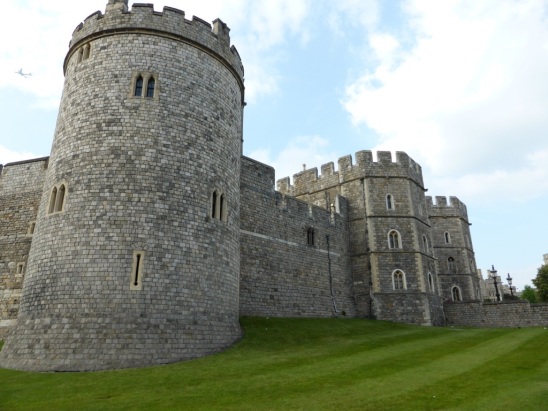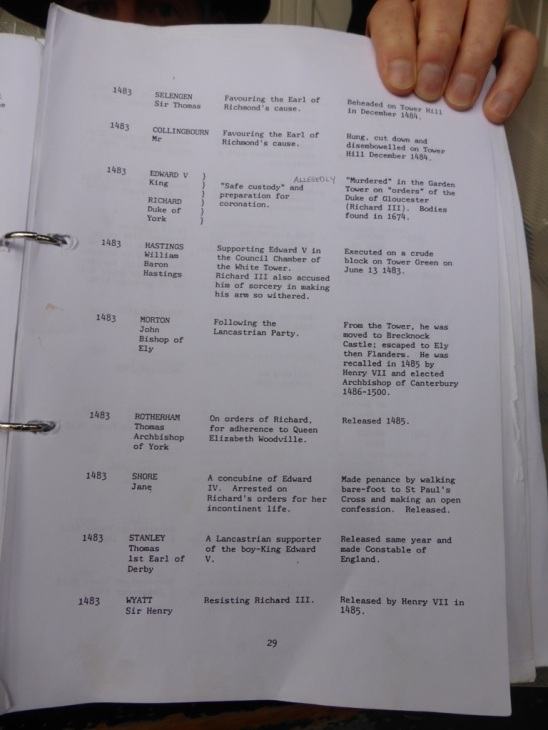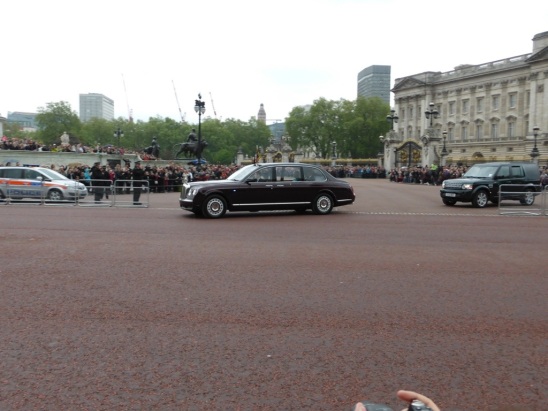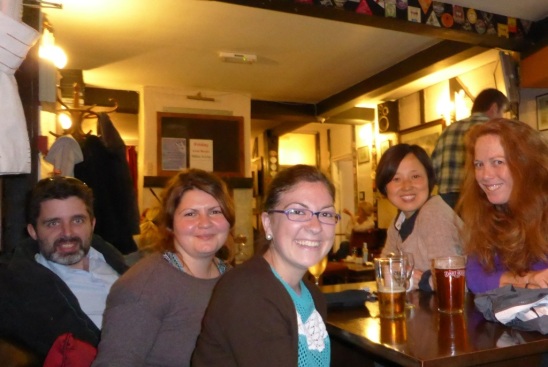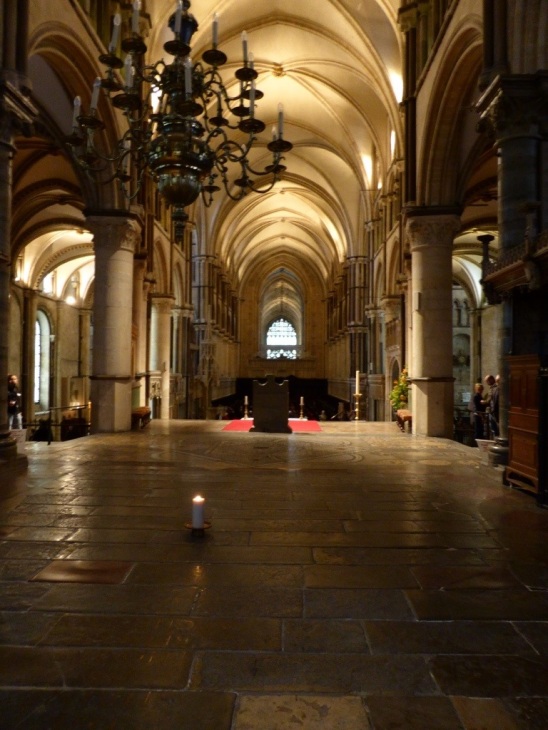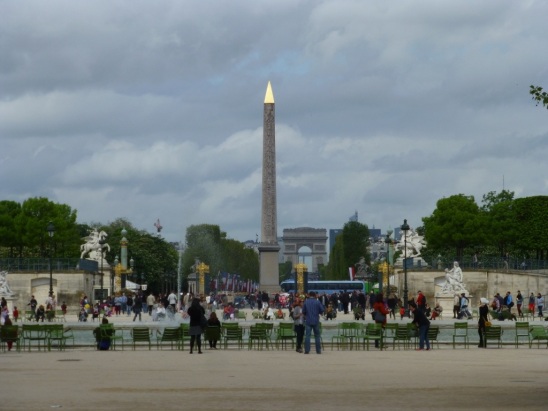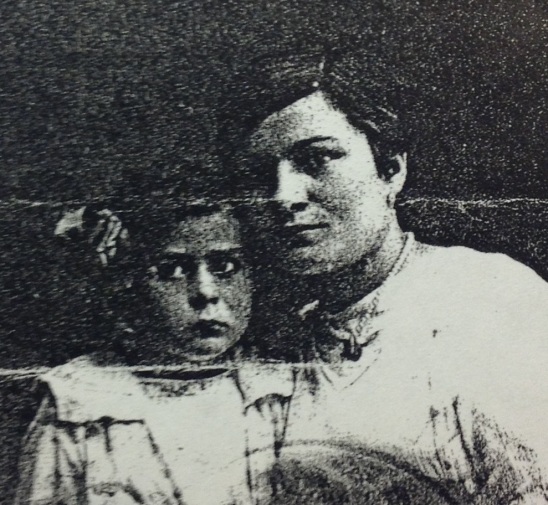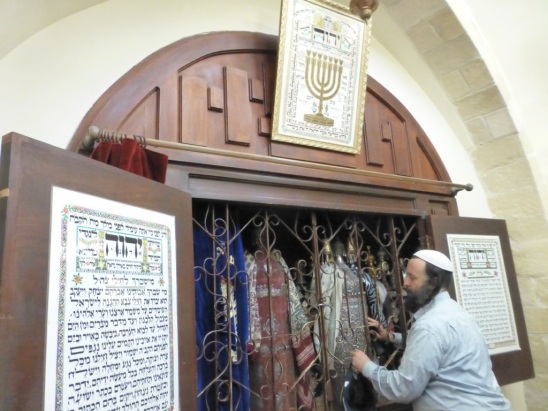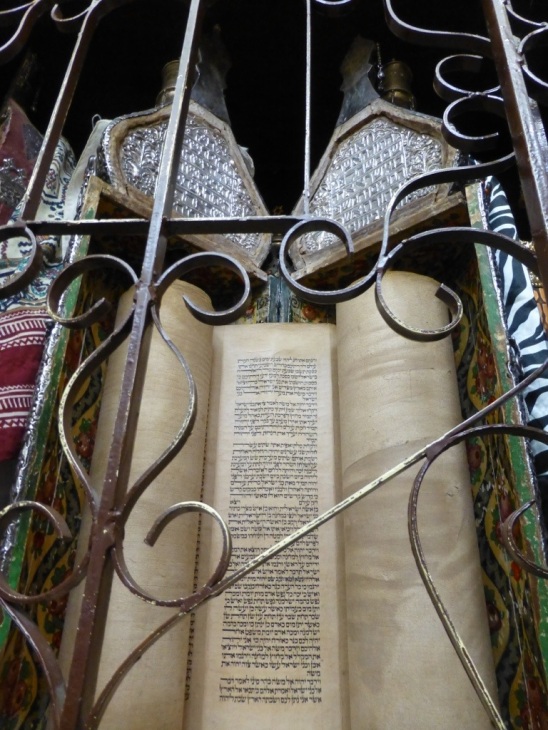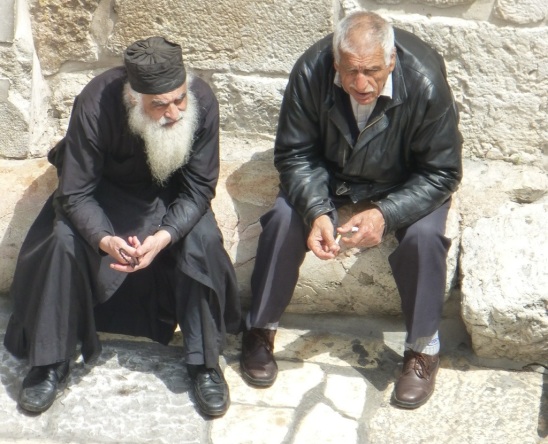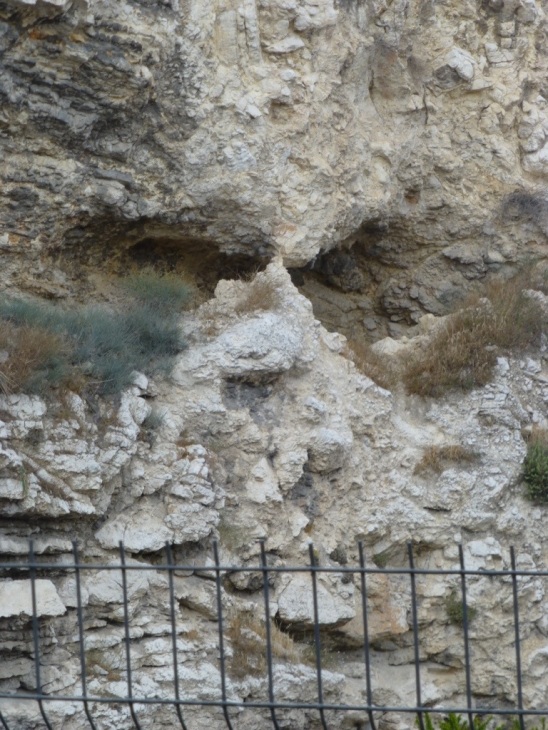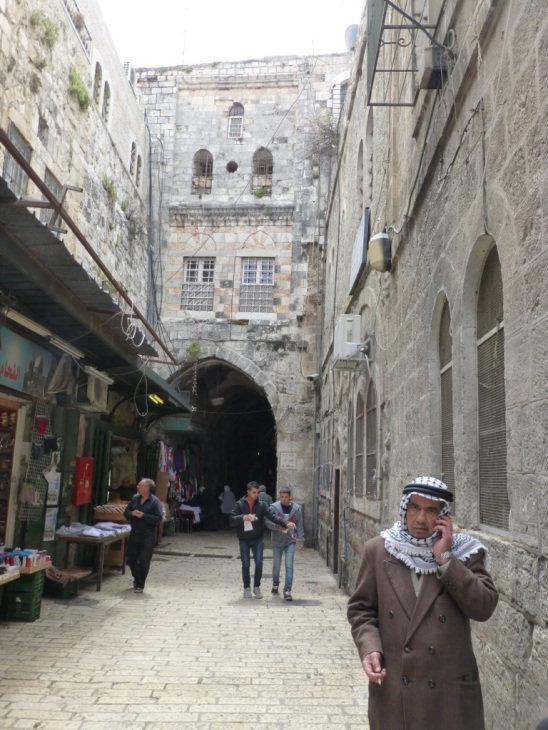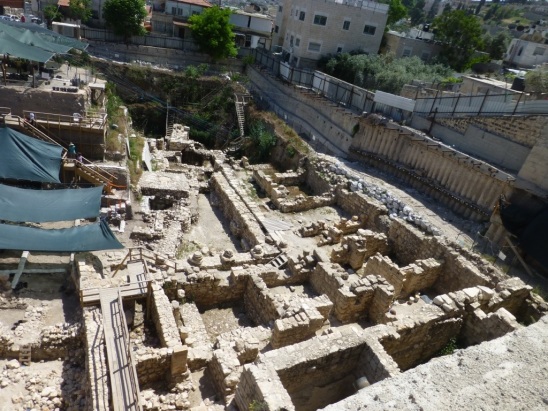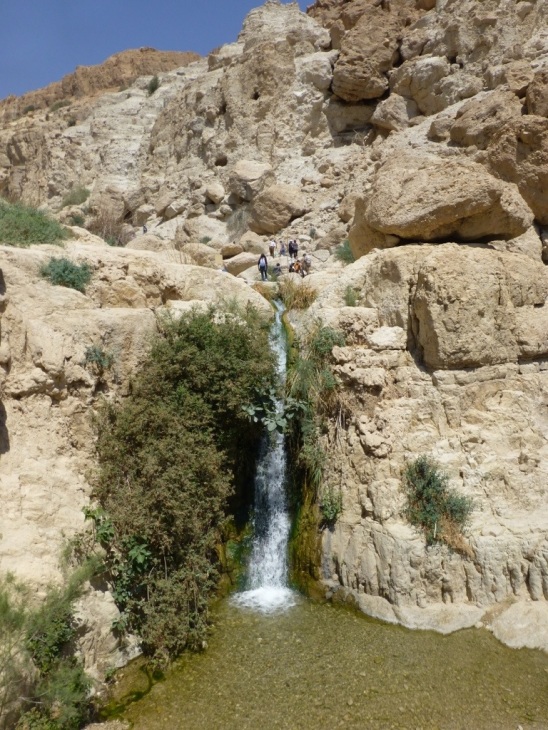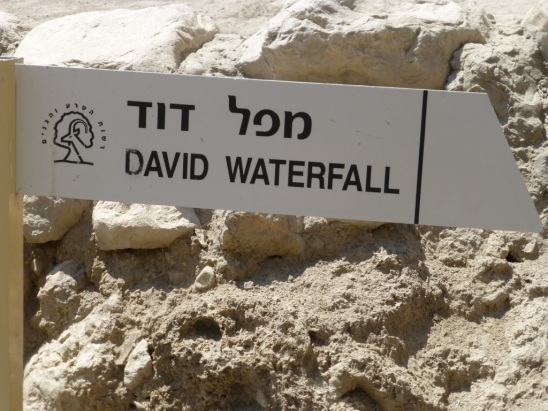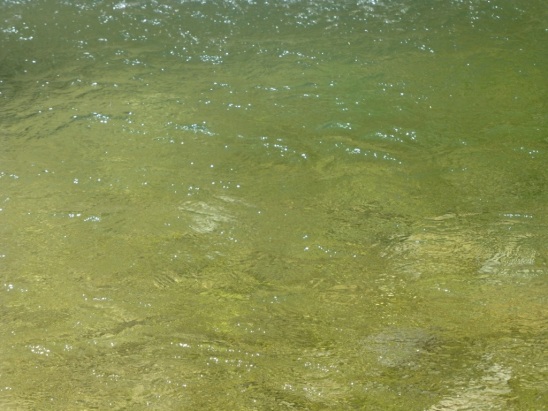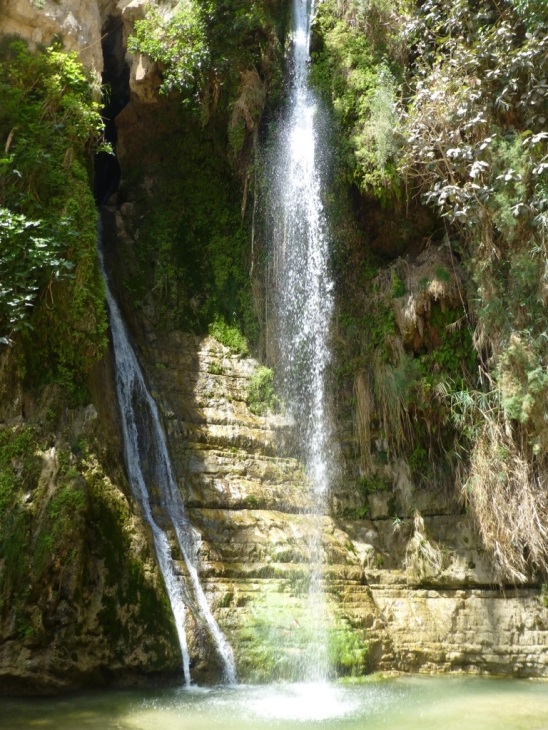Of Singing, Storytelling & Spirits
Edinburgh is the friendliest big city I have ever visited. That is probably because of it’s history. There used to be a toll to leave or enter the city centuries ago. Since most people could not afford the tax, most people never left. The buildings were built higher and higher to accommodate the increasing population. Interestingly enough, the architects of the Middle Ages discovered how high they could actually layer a building when it did not collapse upon itself. A pub stands at the edge of the city called, “The End of the World.” For most of the inhabitants, at that time, this was near the end of their world; inside the walls was the only world they knew and the people here had to learn to get along with their neighbors since they could not just leave.
The city survived three plagues and villains such as the famous murderers, Burke & Hare, who killed wayward travelers and locals, “no one would miss”. They sold their corpses to the medical school down the road. I was amazed at how many of our colloquial sayings come from this area: such as “laughing ’til your head falls off” and “graveyard shift”. People here seem to know how to tell a good tale from their history. If the teller embellishes, “just a little”, to make it a better yarn; then, you bet, the history will be highlighted with a few extra tidbits.
I heard three different versions of the Stone of Destiny and all guides told me that they had the historical truth. The tales of the dead and the spirits which still walked or haunted the living in underground vaults, the graveyard, city streets and old buildings were a main attraction among the ghost tour guides. The later the tour in the evening hours, the more scary the tales….”Boo!” Things can get a little jumpy with the slightest of sounds. Even though I originally wanted to also attend the 10 PM night tour I found that the stories at the 8:30 PM session was all I wanted to handle before bedtime.
Guides of ghosts tours aren’t the only ones that are famous for their story telling around here. This is one of the few cities I have ever found a literary museum celebrating the work of home town authors; Robert Burns (1759 – 1796), Sir Walter Scott (1771 – 1832) and Robert Louis Stevenson (1850 – 1894) remain a few of their greatest from Edinburgh. But the Elephant Cafe is an even more bustling place than this museum as it is the “Birthplace of Harry Potter.” Yes, J.K. Rowling started her famous series here and you too can sit in the place of her creating for only the cost of an overpriced burger….By the way, wifi is extra.
So when you tire of the spoken or written tale you can listen to the rhythm of the story. You will always find a lyrical version of the stories you hear in the plentiful, yet local, pubs. I loved the fast moving jigs but often, if you listen to the words, you’ll hear sad Scottish stories coming through; such as in the song, “I swear I killed my liver over you.”
Which leaves us with the other type of “spirits” in Edinburgh. Instead of Beer Pubs, expect Whiskey Pubs in Scotland. There are full menus of the variety of aged and processed Scottish whiskey. “We drink it straight or with only a few drops of water to unleash the flavor”, I was told. It is an expensive drink in Scotland and not my favorite; but, I found it was the only thing that could get a few bites of the traditional haggis down. Don’t ask me what it is made of…you don’t want to know.
So, in this city you can find two kinds of spirits and many types of story tellers. I learned that I should not always believe what I hear, approach any spirit with caution and the music is never too far away in this capitol of Scotland.
Let Me Tell You A Tale Of Scotland
The speed train from London whisks me past the fertile green slopes of the midlands on my journey northward to Scotland. The flourishing green parcels of earth are divided by hedges and rock walls falling in on themselves. Sheep graze lazily on the unending feast before their eyes. Trees speckle across the land. It seems that dirt roads, which lead to no particular place, get little use as people are nowhere to be seen.
Suddenly fields of bright yellow waken tired eyes. Canola flowers are in full bloom and happily glisten in the afternoon sun. The train whistle blows as we approach a small village. On both the left and right water emerges on either side of the train….I know I am in Scotland and from that time on the presence of water on the land never really disappeared.
I continued on bus up through the highlands. There were freshwater lakes, flowing rivers or saltwater firths observable from almost any viewpoint. The peat moss marshland covering the highlands were sponges for all liquid and a mistake to step upon.
Just look at the landscape before you and keep your feet safely on the dry path. Imagine the heather that would bloom in the fall from the small clumps now sitting everywhere on the marsh. All the brown would turn to carpets of purple covering the hills. But I would have to return to see that glory. My treat for this season was the blanket of Scottish Blue Bells in the green meadows under the protective trees.
“The winter was long and it seemed we had no spring this year….So, all the blue bells came out all at once. They are glorious. Wouldn’t ya say?” Our guide relays to us as we watch the view pass by our window.
I loved every part of Scotland and it’s special geography. It is so open and quiet. I have never seen so many shades of green. Amidst the trees and on the hills mustard yellow scotch broom flourishes. Castles and stone towers remind us of ancient days. Dogs are happy at play in the forest or found walking themselves on well trodden paths. Paved roads are narrow and one vehicle must choose to pull over and give way to oncoming traffic.
Centuries ago it was considered a hard land to reach with unknown natural resources and a fighting people; therefore, the Romans decided to leave this “worthless” land to its “unruly” inhabitants. However, the Romans were mistaken.
It seems that the north did prove to be a challenge to live in without the modern conveniences of electricity and transportation; but, the Scottish were survivors. The people believed that they did not own the land but that they belonged to the land; hard working, resilient people who lived off the earth and created their own unique culture.
They are a people of story tellers and not “Disney tales” mind you. Most tales include mythological creatures such as elves, fairies or water creatures. The legends often explain geological formations or historical events. Often the stories do not conclude with happy endings. I learned from my guide that if I ever see an elf, who often does not have the best interest of others, it would be better not to trust what he had to say.
The people here were relatively free until the English decided to take an interest in the north. My heart ached as I heard their stories and the struggle for freedom and torture endured. In fact, it is a triumph to their people that anyone survived the mass cleansing of their culture after the last Jacobite uprising.
Scotsman were sold as slaves, forbidden to speak their language, play bagpipes or wear their traditional dress. They were not allowed to gather in groups of more then three, even among immediate family. The land, families lived for generations, was given to English Lords. Many, especially any that were part of the last uprising against the English, were killed. In fact, it was attempted to eradicate entire clans by death during that time.
Many immigrated to other countries such as America, Australia and Canada. Scotsmen continued to keep their traditions alive in other parts of the world. It is amazing that the people found a way to save and preserve their culture. I found that the people in this country are some of the friendliest in all the world. It is a culture that moves on from challenges or mistreatment and does not harbor grudges.
This fall people have an opportunity to vote to make Scotland a independent country separate from the United Kingdom. It will be interesting to see how the people choose to vote. A country that fought so long and shed so much blood over this land are now free to simply cast a ballot for independence. However, when I asked locals what they think of the upcoming vote the reaction is mixed.
Everyone will say, “we are independent” and then they will point out that they ‘have a separate educational system, their own Scottish courts and laws and they have their own Scottish pound.’ The Scottish people are very proud of the ways in which they are different and independent from England. On the other hand, they recognize some things “may be better together” when it comes to a standing army or banking system. From a political viewpoint, people will say that the atrocities of the English “was a long time ago” and the current system “works okay” for now.
Yet, it was curious that I was not on one walking tour that a guide would not tease, “Do we have any English here with us today?” As no one ever raised their hand the guide would add, “Well if there are, they would not admit it. If there are English here, welcome to the better side.” It was as if the Scottish tour guides joked about the English in the same manner that the English teased the French. Which demonstrates that even the most difficult wounds can heal and people can come together. Yet the slight tinge of “old rivalry” pokes through the teasing and serves as reminders of former enemies.
The history of Scotland is full of sad tales which can also be heard in the music they sing….and Scotland sings. Music is part of the culture. Once used to keep the beat of the work, such as in the long process of making tweed, now the music is everywhere. I was not in one place, small coastal village to large city, that did not have music happening somewhere every night. The quick playing flutist, the bag pipes, the fiddle or guitar….Every night something to lift the soul.
One thing I will miss about Scotland is the Seafood. It is everywhere. Freshest and best mussels I have had in my life. They do Fish & Chips better than anywhere I have tried in England. Beware of the seagulls if you are eating outside; they will circle around until they obtain the courage, and that won’t take long, to dive-bomb toward your meal and steal your supper. The fish on my plate was almost an inch thick and a foot long on a large bed of hand-cut fries. Fish & Chips in Scotland is on a whole new level and the seagulls expect your leftovers!
Scotland was everything I dreamed and more. The sheer cliffs down to the sea. The boats on the glimmering waters. The mist that appears out of nowhere, rises up from the water and overtakes the earth. The slow coal train chugs through the marshland and over arched bridges. The music of Caledonia makes one feel like they’re home in this magical, mythical, amazing land of Scotland.
London Experience
London can be an overwhelming place. This is my second time here and I don’t think I have even scratched the surface of it. My favorite days include long walks through the city, taking in the familiar highlights, and attending theater production at the Globe. Learning some of the family connections to this city proved to hold unexpected discoveries and learning opportunities as well.
It was good to see the complete facelift of St Paul’s Cathedral….Things looked bright and shiny this visit. This was my first tour inside Westminster Abbey as it was closed last time I was in town. I was struck by the artistic detail in the design of this place. From the woodwork to the marble, everything was in perfect condition. I enjoyed listening to the audio guide here that peacefully moves one through the chapel. It was worth the high price to tour this church as both St. Paul’s and Westminster charge a hefty eighteen pound entrance fee.
It was interesting to see Chaucer’s tomb in Poet’s Corner at Westminster. Chaucer was interned here for his service to the state more than his literary works. He was the first to be buried in what would later be called Poet’s corner. The marble tomb itself is quite short. His red and gold shield is displayed on the wall behind the tomb. There is a detailed marble-work canopy above.
My favorite days were just walking around to see the sights. Covent Gardens, Big Ben, Tower Bridge, Parliament, Buckingham Place and the Changing of the Guards, Hyde Park, St. James Park, Diana’s Fountain and Temple Church to name a few. I enjoyed meeting a friend I met in Cape Town last December. It was nice to see a familiar face and have a local tour guide on a sunny London day. I also survived two rainy walking days in London and I did not succumb to purchasing an umbrella. I learned a lot of history on these days of guided walks so I was glad I marched on despite the rain.
I decided I should attend at least one theater performance; I choose to go to the Globe theater to see The Tempest. It was fun to watch a performance here. I tried to imagine members of audience wearing Victorian era clothes as that was all that was missing from feeling completely feel transported back to Shakespeare’s time. I choose to stand in the yard. It was wonderful to be so close up, but after almost three hours, I admit I had a bit os a stiff neck afterwards.
I had decided that this time in the city I would spend a day discovering the Tower of London. I guess, like most people, I just thought of this place as a medieval prison where people were beheaded and tortured. To my surprise it has been a fort, palace for royalty, mint, treasury, place for records preservation, storage facility, armory and the location of the vault containing the state Crown Jewels.
I enjoyed seeing the Crown Jewels and other royal service-ware. The two largest cut diamonds in the world can be seen here. I also loved walking through the armory. There were a few pieces of armor belonging to King Henry the VIII displayed in the White Tower.
I looked at the name by this armor; I expected to see Henry Manning as the crafter in at least one piece as I knew he had made armor for this King. I took a photo of the name, Erasmus Kirkener. Later that night I went back to the genealogy logs my aunt had sent me. There by Henry Manning’s name was his wife Catherine Kirkener daughter of Erasmus Kirkener. The document said that Henry had learned how to craft armor from his father-in-law before becoming keeper of the Royal Park at Greenwich, and later Knight-Marshall in the royal palace. So I learned another unexpected connection!
The main reason I choose to go to the Tower, however, was because is it the place of my sixteenth great grandfather’s death. There is a book that records which records all the deaths that occurred at the Tower. I was able to get a photo of William Baron Hastings entry:
Supporting Edward V in the Council Chamber of the White Tower. Richard III also accused him of sorcery in making his arm so withered. Executed on a crude block on Tower Green on June 13, 1483.
Edward the V was one of the two young princes held in the Tower, named the Bloody Tower after the disappearance of Edward and his younger brother. Edward was the son of King and was next in line for the throne. Richard III was the princes uncle. The tower death record lists the death of the princes directly before Lord Hastings:
“Safe custody” and preparation for coronation. Murdered in the Garden Tower on “orders” of the Duke of Gloucester (Richard III) Bodies fund in 1674
The Yeoman like to tell the tail of these events. I heard about three different renditions while I was there. The bottom line is that there was a council meeting in the White Tower. At some point Baron Hastings said something that questioned the disappearance of the princes or supporting the former kings first born son. Richard III, without ever completing a formal recorded charge and without a court proceeding ordered that Hastings be executed. All the Yeoman seemed to enjoy reciting Shakespeare’s version, “I shall not dine until Hastings head is on a plater.”
All Yeoman agreed that this was the only beheading that was done without a formal block. The executioners used the first piece of wood they came to just outside the Tower near the Green. So that’s that. I guess I am proud that it seemed like he tried to do the right thing. Even though, the right thing could get a person into a lot of hot water at that time. I guess it still can but usually it doesn’t end in beheading nowadays.
Just near the green there is a circular memorial for: William, Lord Hastings 1483, Queen Anne Boleyn 1536, Margaret, Countess of Salisbury 1541, Jane Viscountess Rochford 1542, Queen Katherine Howard 1542, Lady Jane Grey 1554, Robert Devereux, Earl of Essex 1601, Highlander Farquhar Shaw 1743, Highlander Samuel Macpherson 1743, Highlander Malcolm Macpherson 1743. This poem struct me as it asked us to pause “while we walk the generations … under these restless skies.” The full inscription reads:
Gentle visitor pause awhile where you stand
Death cut away the light of many days
Here jeweled names were broken
from the vivid thread of life
May they rest in peace
while we walk the generations
around their strife and courage
under these restless skies.
If you have been reading the last few blogs, you are aware that I have been traveling to places where I had past family live in England. It has been a fun way to learn about history and I would encourage others to travel this way if you are able. From my experience in England, it is easier to make meaningful discoveries when you walk where they did. Even if it is just getting lost on a footpath in an area where your family once lived. It does make one think about your connections to a place and a people in a different way.
Chasing Chaucer – Part II, Cudham and Downe
In the year 1364, Kathleen Chaucer married Simon Manning in London and they moved about twenty-miles away, to his home village, in Codham, Kent. Their grandson John Manning would marry a girl from the next village. The Manning family spent the majority of six generations in these two villages from the mid fourteenth to early seventeen centuries. Codham has change the pronunciation and spelling of the township to Cudham since that time and the cars have a difficult time maneuvering the narrow roads that were not built for two lane traffic; but both are still rural townships and probably have the same number of businesses as they did centuries ago.
I stayed in the only accommodation between Cudham and Downe, a house rental a short walk down Cakett’s Lane. In addition to a significant lack in tourist housing, both communities do not have regular or direct public transportation between the two. I decided to walk rather than rent a car as I discovered that even riding in the passenger seat in rural England seemed to unnerve me. I also assumed that I could have a more authentic experience to walk as my ancestors did long ago. Besides, I am told that “footpaths are the English way”.
Even though Downe was only a mile away it took me all day Saturday morning to arrive as the footpaths were clearly marked “footpath” but often the sign did not clearly state where the footpath lead. At times I found myself looking up at a pole with the word “footpath” written on three signs, each pointed in different direction. I looked up then over at each footpath going a different direction. It was like tossing a coin in my mind to decided which way I should go. I know for certain that I did not take the most direct route.
Perfectly cut hedges bordered farmland, pastures and roadsides instead of the fences. Five to fifteen feet tall they lined the roads. Hedges made up of bushes, ivy, flowers and even some weeds. Anything and everything green, each trying to overtake their neighbors but none would win as the land owner would straighten the hedge of the disobedient. Such hedges made it difficult to keep ones direction as one could not see above them to recognize familiar landmarks such as hills or church steeples.
So I wandered through sheep pastures and fields of tall green grass. I looked up at the canopies of green shrubs rounded overhead. I was often lost amongst the flourishing trees.
I walked past the fields to the hills on the narrow path; trees tower above, ferns become plentiful, and ivy dominates the space left over in this wonderland. I could not hear a sound from the towns that must be close-by…. “I am sure I have not walked past them”, I think to myself.
As I climb the hill, a blanket of purple appears before me. The blue bells were out in full force and gently covering the earth as the dirt path winds higher. Yes, it took most of the morning to arrive and to return to Cudham but the walk was wonderful and each turn lead to a new discovery.
I walked around Downe and entered the church where my twelfth-great grandparent and other ancestors had been buried. I looked for the houses and buildings made of flint rocks which would have been the material used to build during their time.
I made some unexpected discoveries too. I ate at a pub called Queen’s Head and I learned that it was called Queens Heads in tribute to Queen Elizabeth’s visit to Downe in 1559 when she attended Margaret Manning’s baptism. I also learned that a Manning was a previous owner of Down House, which was later owned by Charles Darwin. I was able to walk by the family property where our tenth great-grandmother was raised. I was unexpectedly given baptism and death records for the Manning family while I was in Downe. I was able to walk through the fields where Darwin pondered his ideas and did his research. Finally, I discovered the hidden garden behind my rented flat which was known throughout England as a master garden.
I found Cudham and Downe to be peaceful villages where one could let the world fall away and wander without a care. No wonder our family decided to live here for so many years.
Chasing Chaucer – Part One, Canterbury
I have never really been too interested in genealogy. I especially was not interested in all the work that was required with such a hobby; finding the connections between generations more than a century old and can take countless hours to research. Often those hours lead to a complete dead end. I think people who enjoy this work, may view it as a game of strategy. Such family historians may only find proof for one right connection out of hundreds of searches; But in that one right find, well, that victory can last for months and will motivate them to continue on their quest.
Luckily there are such people in my family line that love do this type of detailed research. It is from that research that I have based my next set of travels. I have landed in southwest England to follow the path of my sixteenth great-grandmother, Kathleen Chaucer and her family.
Most people, rich or poor made pilgrimage to Canterbury during the time of Kathleen Chaucer and it is likely that several members of my family line traveled to Canterbury. It is recorded that her brother, Geoffrey Chaucer, did travel here during his work for the state and for the funeral of Prince Edward, The Black Prince. However, he is most famous for his writing of the Canterbury Tales.
Geoffrey Chaucer was someone who revolutionized writing of his day. He was the first author to introduce fictional characters and the first to write in plain English during a time when most works were penned in more courtly languages, such as French. The Tales were about the pilgrimage to Canterbury and a fictional contest of stories told along the way.
While I was there I learned that if the religious or those in need of “healing” wanted to set out on a pilgrimage and “did not have the money to go to Jerusalem then they went to Rome. If they did not have the money to go to Rome, then they went to Canterbury.” Why did they go to Canterbury? Well, in 597, the Pope sent a man, St. Augustine, to Canterbury to “christianize” the island; Since that time the seat of the religious leader in England has been in Canterbury. The bishop held a lot of power in Canterbury and that did not always sit well with the royal leader in charge.
In 1170, the bishop of Canterbury was murdered in the cathedral by the soldiers of the King who thought this would please their royal leader. Almost immediately after the murder, pilgrims made the long journey to the place of martyrdom of Thomas Beckett. During eight hundred years of pilgrimages monks, who watched the tomb, witnessed and documented over five hundred miracles. Then King Henry VIII could not get a divorce from the Pope in Rome and he single-handedly got rid of everything Roman Catholic; including Saint Thomas Becket who he apparently had burned and his ashes scattered in the wind. This is also how the Anglican Church of England was born.
The Arch Bishop of the worldwide Anglican Church is seated at the Cathedral in Canterbury. There is a candle that sits on the tile floor were the tomb of Thomas Becket was located. The only other reminder of what had been here is a large rectangle rift in the marble floor created by thousands of visitors walking around the tomb.
As an Episcopalian, which is part of the worldwide Anglican Church, I was surprised how connected I felt to the Cathedral upon hearing the history of the church and attending two services while I was here. I particularly loved listening to the boys choir at Evensong one night. I have never seen so many eight to twelve year old boys ever act so proper or sound more angelic.
The pews at the Sunday service were full for the Pentecost. The newly elected city council were in attendance, as they are every year at this time, and sat in the front rows dressed in flowing robes, hats, white gloves. Two men in the front row wore traditional white wigs. Yes, tradition is alive and well in Canterbury.
I went on several tours to learn about the history here. I loved the Canterbury Tales “tour” performed by local university drama students. I walked with one guide in the city that reviewed everything from the changing architecture over the centuries to stories of historical figures as we walked through the streets. The night ghost tour walked some of the same paths as the city guide but the stories changed; rather than the traditional history of architecture and local citizens, we learn of those who died and still lerk around the living.
My favorite part of Canterbury was taking in the environment of the place. It is called a city because of the Cathedral but the population is that of a small town. Once one wanders outside this walled medieval city there are green fields, streams and meadows. Ivy and wisteria climb the flint rock walls and up two story homes. Instead of a coffee shop on every corner, there is a pub and once inside there holds a welcoming smile. It is a place were no one is a stranger for very long.
I was going to stay in Canterbury for a few days day and I made myself leave after a week. The pace of life was so easy, the people so friendly and the surroundings so stunning I really thought I could return to live here. If you are looking for a slower place of life then look no further than Canterbury.
Two Weeks In Paris
Paris holds a special place in my heart because it is the city where my grandmother was born. I remember my first journey to Paris; I was in awe of the gardens, the lights, the perfect symmetry of the city and the beautiful bridges that cross the Seine….Well, really I was in awe of everything that gives Paris that unique atmosphere which transports you to a different time and place.
I also remember seeing the monuments of Paris, such as the Eiffel Tower and Arc de Triumph, and knowing that my grandmother must have seen these sights too as they tower visibly from several vantage points across the city. I still feel a little more connected to her each time I return to Paris.
These past two weeks were even more special because I was able to share her city with my mom and aunt. This was my aunts first time in Paris and it was fun to watch her face as she saw the famous sights that are bigger, brighter and more amazing than mere photographs can capture. And when you see these sights for the first time you can not help but look up and mouth… “Wow”, as you try to take in all the details.
As I look at the photographs from our Paris trip, I notice that my mom and aunt are often looking up or pointing out something to each other. Making sure that each of us doesn’t miss some detail that could go unnoticed or that photographs can’t capture. Either the photo is in full zoom and you miss how large the structure is or you take a wide angle photo that will not capture the detail in what we are seeing. In several of the pictures, I can just hear my aunt say to her sister, “Marcelle, look at that.”
That is the way it is in Paris because there is so much to see everywhere. Every time I return I make new discoveries and see something that I may have passed by on a another trip and not noticed.
We went to all the big sights. There was a “to do” list on the mirror in the living room of our apartment. Anyone could add to the list and I made sure we got around to the requested sights. Every evening the three of us gathered around a map, also posted in the living room apartment, as I highlighted where we had been that day in relationship to what we had already discovered in Paris.
We spent a day in Versailles, we went to several churches and at least five museums including Musée d’Orsay and the Orangerie. We walk in the Garden of Tuileries, and spent time walking in the laid back and artistic Montmartre and Latin Quarters. We went to evening concerts at Norte Dame and St. Chappell. We had dinner and enjoyed a show at the famous Moulin Rouge and also enjoyed a Mother’s Day dinner cruise on the Seine.
Since we had so much time in the city, we were able to leisurely take our time and absorb our environment. We enjoyed going to the nearby produce stand nearly every afternoon for the freshest fruits and vegetables. Then we would go next door to the bakery to get fresh baked bread. The other specialty food stores would round off our shopping. It is the Parisian way to buy fresh food daily rather than “stockpile” for a week or more. We found this was a fun experience to share together. However tired we were from a day of museums and touring we always seemed to have energy to shop for groceries.
Yes, we indeed had a packed two weeks while in Paris. What surprised me is that upon returning to a couple of museums, I turned the corner and saw a picture of a favorite artist and I thought, “Oh, there you are.” Like an old friend who had been waiting for me to return again. I found this city still had surprises for me and still leaves me in awe at her magnificence.
I loved walking around and taking in the city at a slower pace. I loved watching the stain glass turn colors as the sun set during an evening concert. I loved the outings for crepes or creme brûlée which seemed to become a daily event. I loved our latte breaks to discuss all we had seen that morning and late night conversations which made morning coffee a requirement. But most of all, I loved this special time together with my grandmother’s two girls. I know that I will cherish our time in Paris my entire life.
Attached is a link to a video of our time in Paris. The black and white photo is of my grandmother and great-grandmother before they had left Paris at the end of the First World War. I made this video for my mom and aunt as a reminder our incredible time together. I can’t wait for the next trip. Enjoy!
Land of Our Fathers
The last two days I was in Israel I traveled to the West Bank. The first day I went to Bethlehem. That was my first experience crossing to the other side of the separation wall. Here, rather than the tension that makes up the invisible wall in the old city, there was a physical wall in which the boundaries were clear to everyone.
It was so wonderful to see the sights of the Christmas story. Where the shepherds lived, the location where they first saw the star and where Jesus was born. However, it made me sad that the place where the Prince of Peace was born had to have a wall which separated the people in order to keep the peace. This first day was a good introduction to the most difficult and disputed area in the country which I visited the following day…Hebron.
Hebron is one of the oldest cities in the world. At the top of the hill, all three religions believe that Abraham and Sarah established their home and below, at the base of that hill, lies the burial grounds for Abraham, Isaac and Jacob and their wives. The building over the graves is called the Tomb of the Patriarchs and is sacred to the three major religions. It has had several additions over the centuries but the largest visible part of the construction was completed by Herod during the second temple period.
One of the few archeological digs allowed by the government in Hebron is at the top of the hill. Here one can view 4,500 years old structural remains. Yes, an archeological dig from the time of Abraham and Sarah! That was an unexpected “Wow!” experience during this tour. Even though I was captivated by the historical significance of this area, I was here for another purpose.
I found a rare tour of the West Bank that was started just over a year ago which takes small groups to the heart of Hebron; half of the day is given to an Israeli guide and half is given to a Palestinian guide. Each guide had walked us through the exact same areas but narration of the story had completely changed.
Both had prepared for us to listen to people who lived in the city who had experienced extreme tragedy. Both had family members that paid the ultimate price in this long standing conflict. We heard also about the hardships of living here from both sides. Each side explained the significant moments of history which they hold as an important memory of their story. It is clear that these memories and this personal history infects the conversation of the current conflict.
What I know for sure is that both sides agree that there was a time, only two generations ago, that all people lived here in peace…side by side. Both sides had grandparents who were friends with someone from the other religious group.
In the nineteen twenties there was a shift and everything changed. There are a lot of “What if’s?” historians and peacemakers can speculate about. Yet again on this world tour Britain is involved in part of those historic decisions when they occupied this land in the early twentieth century.
From the time the British government created it’s 1929 “solution” to the 1994 “peace accord”, it seems that only “a” solution was found in both cases; I can not believe that either the 1929 or 1994 solution promoted peace. It is clear that sending each group to “its separate side of the playground” is not creating any type of true or lasting peace….helping people to move on from the past.
A past which has created intense fear of the other side and an unwillingness to trust again after such atrocities. Everyone feels like they are the victim here. Additionally, there are common people on both sides that feel that the government is not supportive in giving them what they deserve. It is easy to see in their eyes, through their tears, that each side feels like they were the most victimized.
How do you do something differently here….with so much history, so much hurt, so much fear.
I now understand more about the current conflict and know there is not an easy solution. Anyone who thinks there is an easy solution does not understand the conflict from either side and should not have a seat at the decision table. There is so much layering of history, religion, anger and tears that I realize that simple solutions of most western people are obtuse considerations and will also fail.
Most westerners are not religious in the same way as the people living in the holy lands are religious. So most westerners, especially the non-religious, will not fully understand an important side of the conflict. Additionally, we can not comprehend not only their connections to scriptural ties as well as their religious attachment to the land.
I don’t have a solution. I feel more confused about how there is going to be a resolution to the situation in the Middle East now that I have listened to people living amidst the conflict. I also understand that any solution that comes from the government, and even worse foreign governments, will fail over time. The issue is between the people of this land and only these people can resolve the conflict there.
One thing I have learned on this year-long journey, is that when there have been deep wounds that have threatened a region or a country, there can be no peaceful solution until there is reconciliation and forgiveness from within. It was only a few months ago I wrote about the path to peace in South Africa. It was a religious movement and the act of forgiving that made all the difference towards a path to the future. Only those who have been hurt can lay down their past and trust again. Only then can a new relationship begin.
Within this land and between the people, not the heads of governments, this is the only way forward to any type of lasting peaceful resolution. This opinion is based on so many other countries I have seen move beyond the horrors of their own history. My prayer is that someday this would happen in this place too…..And wouldn’t this be what Abraham would have wanted for all his children…..True peace among all the members of his family.
Quote from January 1, 2013 Blog: My Journey So Far – A Historical Perspective
“Forgiving is not forgetting; its actually remembering–remembering and not using your right to hit back. Its a second chance for a new beginning. And the remembering part is particularly important. Especially if you don’t want to repeat what happened.”
– Desmond Tutu, Archbishop of Cape Town, Anglican Church of South Africa
Two Weeks in Jerusalem
Those of you who know me well, you are already aware that Jerusalem has been my home base for the last two weeks. In fact, I lodged at a hospice within the old city walls for the first week I was in Jerusalem. I have delayed in posting about this place because I have struggled with how to explain everything I have absorbed during this time; And the fact is that there is simply too much to tell.
I saw countless holy sites for the three major religions. I walked through archeological excavations and museums. In fact, I went back to a few main attractions more than once.
I guess I thought by being in the land of all those historical accounts and biblical stories that I would also feel some spiritual transformation; an extension of my spiritual journey from the Himalayan Mountains. I can’t honestly say that was my experience here.
The first week, I greeted every morning with a lesson plan I had outlined for the day. After the first couple of days, I knew the “lay of the land”. I could get to each section of the old city maze without too much trouble and I had learned when I need to go to each destination to avoid the crowds in order to have a more peaceful experience.
Let’s be real…This place is intense. So much to take in and several times people, locals and tourists alike, are not that friendly and, at times, downright curt. The locals are direct in their language and don’t mince words which can come across as abrupt. This is especially evident to those staying in the city for a bit longer and who are not insulated by a large tour group environment.
It seems that good people often leave their manners at the door. Some even recognize their bad behavior as they act in a way they never would act normally. For example, at one of the holiest sites in Christianity more than one person turned back as they cut with several others in front of me and said bluntly, “I am sorry. I have to stay with my guide.”
Now that is true. I could not imagine being on a tour with only two or three days to “cram in” all of the highlights and, on top of that, lose my group in the mass of people that walk these cobblestone roads everyday; but, that is the old city. It is masses of people, in a small space, living their lives and trying to worship as they “work around” all the tourists which have come in masses; And most of those tourists are rushed around, on a time limit, to see the highlights of the city.
The local residents all own a “piece” of this bit of earth; Whether individually or collectively, they own it and all seem to know where the invisible boundary line is located marking the end of “their” land. Many do not cross even semi-common areas in order to “keep the peace.” I am not talking only about the three major religions here….I am also talking about the sects within each religion.
The Church of the Holy Sepulcher is a perfect example; Here the oldest Christian sects divide the church and it is clearly understood who controls which part. What is most interesting is it is a Muslim family that opens and closes the church each day to assist in keeping the peace. Yes, that may be over simplifying the issue but one has to admit there is some chaos in the overall organization here. I visited this site four times to see all the “holy” places within this one church.
The first two times my own Pacific Northwest culture, of expected personal space, could not handle the crowds pushing and cutting in line; so I left. I just could not see this place Jesus had spent his last hours of human life while being irritated at my neighbor. The third time I had a moving early morning experience at a mass at the crucifixion site of Jesus; however, I had to return a forth time to see the tomb since the sect in charge of that area decided to close for cleaning that morning.
Yes, I saw the sights….ones I knew were here and others I discovered. It was meaningful to learn the history and see the archeological discoveries throughout the area within and just outside of the old walls.
I spent an entire day at the Israeli Museum. I especially loved seeing the Dead Sea Scrolls and new Herod the Great exhibit located at the Israeli Museum. I love walking around the Mount of Olives and seeing New Testament locations. I thoroughly enjoyed the Night by Light show at David’s Tower and walking on top of the southern ramparts of the old city walls. Looking back, another highlight was walking the Via Del La Rosa after the tour groups left and some of the businesses and churches closed.
The Ministry of Tourism had provided a several excellent self guided audio tours of the old city which I downloaded on my iPad. I loved walking through the city at my own pace and when I wanted to stop I could just hit pause on my iPad screen.
After a few days, I found locals who recognized me and were happy to greet me. It made me feel like I belonged. I found that I would make a point to return or pass by their businesses, even if the walk was a little out of my way. The second week, I moved outside the city walls to a hostel that seemed to insulate pilgrims from the outside world. The soccer game was always on the big screen and the foreigners would all find their way to the social area and common kitchen on the first floor to visit about their day. This was a great benefit as I planned the rest of my trip beyond the old city.
In the end, I realize that for me this area holds a lot of historical significance; but as a Christian I know that Jesus is no longer here. He is not at the Mount of Olives, He is not on the cross, He is not at the tomb. He is gone and maybe for me that is the lesson here.
Masada, Ein Gedi and the Dead Sea
An hour south of Jerusalem is an historic flat top rock mountain with cliffs on all sides called Masada. The first fortress built on this mount was completed in 150 BC by Jonathan the Maccabee. The same Maccabee’s that were the force of the Jewish revolt at that time.
Later the Maccabee’s ruled during the Hasmonean Dynasty and are still remembered today during Hanukkah celebrations. Herod the Great decided to rebuild during his reign, just over a hundred years later, in the only way he knew how….with total exuberance.
However, what Masada is most know for is that second revolt. The one that occurred after the second temple was destroyed by the Romans. (Yes, the same second tempe that was incidentally built by Herod the Great.) The group that was left from this revolt fled to Masada. About one thousand men, women and children were able to survive as long as they did with the provisions that Herod had generously left behind. It took three years before the Romans were within reach of the top of the cliff. When they arrived they found their enemy, dead. The massive group suicide left a message….Better to die than live as slaves. To this day Israeli’s vow that Masada shall “never fall again.”
Many hike up to the top but I choose to ride the cable car in both directions to maximize my time on the mountain. I was so glad I did. I purchase the audio guide and walked through the fortress but the two hours I was given was not enough. I was surprised to learn how large the surface area of the top of the mountain was and I was even more surprised how much Herod actually built here.
I continue to be impressed with this man that left so much behind. However, after seeing his reconstructed sarcophagus in the city museum, I am not sure he realized that he would end up like everyone else. In the end, historians, not himself, would describe in their own terms who he was as a man.
After leaving the mountain we visited the nearby peaceful spring in the desert called Ein Gedi. Water bubbled and fell from the death of the desert to bring life. Beside the water was green grass and trees in the middle of nothingness.
This area is mentioned several times in the old testament. In Joshua, Ezekiel, Samuel I, Song of Songs, and Ecclesiasticus. However, the highest falls, named David Falls, is said to be the place mentioned in Samuel I, where King David hid from King Saul.
We walked to the top of the falls and I thought that if I had to hide out for a while, this would not be a bad place. We stayed longer than anticipated but decided that we could have lunch any day but to be in this calm; This was not easily left behind.
Soon after we were in the van headed for the jewel that was “just in view” all day: The Dead Sea. We bobbed like a fishing bobbers in the water and laughed at the feel of it. It was easiest to just lay back in the salt water and rest form the early morning. The water had healing power, or so they say, so what else was there to do….Well, maybe one thing.
One by one we scooped up the mud and cover our bodies in the clay that would be an expensive treatment in any nearby spa. Some of us put more effort than others on applying the thick substance to our skin. We laughed as the waves lapped on our legs and we had to redo our handiwork.
It seemed like forever for the clay to bake into crust in the hot summer sun. When we could not stand it anymore we were back in the Sea or nearby showers. Some hoping for the miracles that they claim. All I noticed was, whether the sea or clay, my skin felt so much softer than it had earlier.
And thus ended my day in an area that was a symbol of martyrdom, reconciliation and hedonism. What a combination!


































